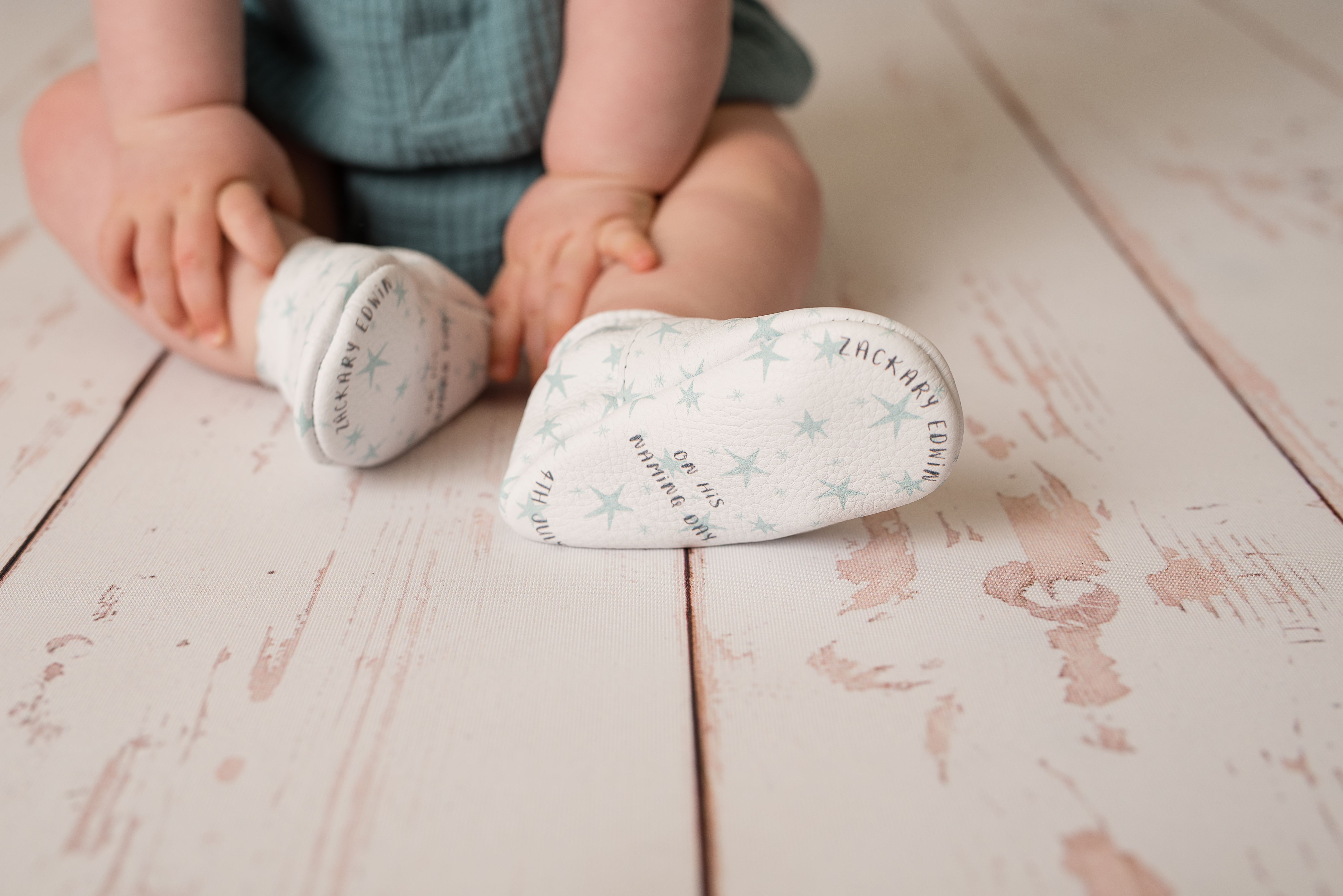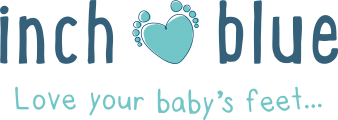First Steps: When Should You Get Your Baby's First Shoes?

Being a parent and watching your little one explore the world can be both exciting and daunting at the same time. Their first teetering steps are a milestone we look forward to, but can’t rush as the timing is different for every child. As we watch closely and see our babies developing and starting to gain mobility, it raises the question of when the right time is to invest in their first pair of shoes.
In fact, do they even need shoes at this age? Should they go barefoot? How do you know which sort of shoes will support their delicate feet? So many questions! It can be confusing to know what to buy, where to buy baby booties from and when to slip on their first pair, especially if you’re a new parent.
That’s why this latest Inch Blue blog sets out to take you through the early stages of your baby’s developing mobility to help you answer the question “when should you get your baby’s first shoes?”
When is the right time to get baby first shoes?
The right time for your baby’s first shoes might not be the same time as for your friend’s from your baby group or nursery. All babies develop at their own pace, starting to move and weight bear at different rates in line with their own developmental progress.
Of course, when your toddler is confidently walking outdoors over grass and mud and stones, they will need a ‘proper’ pair of toddler shoes. But in those early days when they begin to roll over, crawl and then go on to cruise the furniture, do they even need shoes? You might think barefoot is best.
It’s true bare feet help them develop strong balance and feel the ground with their toes, which is important for healthy foot growth. This barefoot training is essential for their future walking adventures and prewalker shoes are perfect to support those early stages of movement.
Pre-walker shoes feel like going barefoot
Once your little one starts to explore and cruise from one piece of furniture to the next, soft-soled prewalker baby shoes give them that little extra protection but still allow them to mimic barefoot walking and feel all the different textures around the house. The soft shaped slip-ons bend easily to help them build strong muscles and coordination in their feet and ankles. It's like natural sensory play beneath their feet, reducing the chances of slipping without restriction.
Prewalker baby shoes add valuable soft cushioning against bumps and scuffs, allowing them to move comfortably and develop naturally, all in preparation for those first confident steps outside.
When do babies start wearing shoes?
Every baby hits their milestones of crawling and cruising in their own good time. Most little ones start crawling between 7 and 10 months old, and for them it’s a magical time of discovery. For parents and grandparents, it can be less relaxing, maybe even stressful, as they begin exploring the world beyond our immediate control.
Adding a level of protection and support around 8 months when babies start wearing shoes can be reassuring for crawling babies and for their parents. Especially as some children skip crawling altogether and go straight to ninja rolls or scooting on their bum, using their feet to propel them along. All of that is perfectly normal too.
From between 8 and 12 months your baby might begin to cruise from sofa to coffee table or anything sturdy to pull themselves up and then take wobbly first steps, holding on for balance. Cruising is an important part of their early independent movement for building walking muscles and practising shifting weight. At this stage some babies start wearing shoes. But which ones are right?
How to choose babies first shoes?
So long as the first shoes for baby that you choose are as close to bare feet as possible, like Inch Blue prewalker baby shoes, you’re stepping in the right direction. Especially when the designs are bright and fun in bold colours and designs to appeal to the little ones.
Babies first shoes should offer support to help infants develop coordination and leg strength for those all-important early steps. Don’t choose a stiff style of baby shoe. Babies need their first shoes to be soft, spacious, lightweight, and breathable and mimic barefoot walking as much as possible.
Inch Blue prewalker shoes are made from super-flexible suede or leather. Natural materials that breathe and bend with your baby's foot, just like a comfortable second skin. They also have non-slip soles to help with balance and coordination.
Inch Blue baby shoes also stay on more easily thanks to elasticated collars that give a gentle little hug around the ankles to keep them secured in place, even when a baby is crawling quickly across the floor.
How do babies first shoes support foot development?
Choosing the right first shoes can play a helpful role in the development of healthy feet for your baby. The emphasis is on allowing natural development, not cramping little toes with stiff materials or pinched shapes.
As well as adding grip, soles are super flexible too to ensure that your baby can feel the ground beneath their feet. This aids the development of the feet as flat pads give way to arch formation, while muscles and tendons strengthen as your baby’s foot grows on to the next stage.
Inch Blue shoes mimic barefoot benefits, so they’re the perfect choice for prewalkers. Newborn babies are soft all over to allow for ease of birth, including their foot structure which is mostly cartilage and not bone.
As babies grow their bones start to ossify, gradually hardening to allow your baby to support their own weight when they walk. That’s why prewalker shoes are essential to gently swathe the foot with natural protection. Think of it as supportive softness like a comfy second skin crafted in suede and leather to bend with your baby's foot as it grows and develops allowing natural movement.
Babies first shoes at Inch Blue
If you’re a parent or grandparent considering when to get babies first shoes, then focus on the comfort and capacity of Inch Blue to support development. The most important feature of baby booties is that they offer supportive softness like a comfy second skin crafted in natural materials like suede and leather to bend with your baby's foot as it grows and develops allowing natural movement for optimal foot health.
